Last updated on July 22nd, 2024 at 07:22 am
Welcome to the serene world of Scandinavian kitchen design. This is where simplicity, functionality, and a deep connection to natural beauty converge to create spaces that are as calming as they are invigorating. If you’re captivated by minimalistic elegance, inspired by light-filled rooms, and drawn to a color scheme that resembles the colors of the Nordic landscape, then the Scandinavian kitchen may be for you.
The goal for this page is to guide you through the key elements that make Scandinavia’s iconic kitchens–from functional and dually stylish furniture, to the soothing color schemes and innovative use of light. Whether you’re looking to fully transform your kitchen or simply infuse a touch of this timeless aesthetic, you’ll find inspiration and practical advice to guide create a true Scandinavian kitchen retreat.
Basics
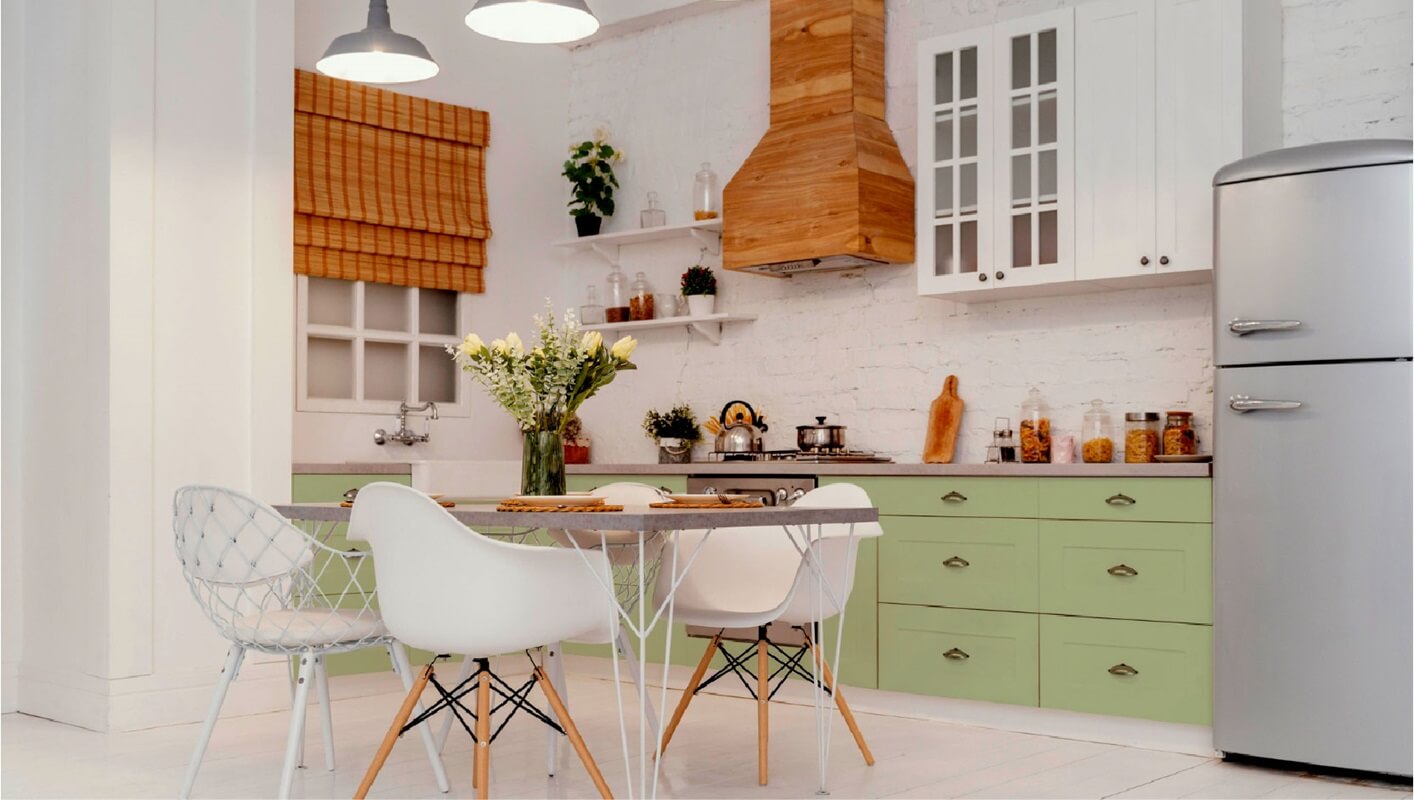
History & Evolution
The Scandinavian kitchen design, known for its minimalist yet cozy approach, encapsulates the essence of Nordic living. Rooted in the principles of simplicity, functionality, and a profound connection to nature, the Scandinavian kitchen is a serene retreat that fosters a sense of calm and togetherness.
Born out of the northern European lifestyle during the early 20th century, the Scandinavian design reflects the ethos of a region that values light, simplicity, and natural beauty due to its extended winters and desire for warm and well-lit interiors. It evolved around the idea of crafting a space that is functional and inviting, with a dash of understated elegance.
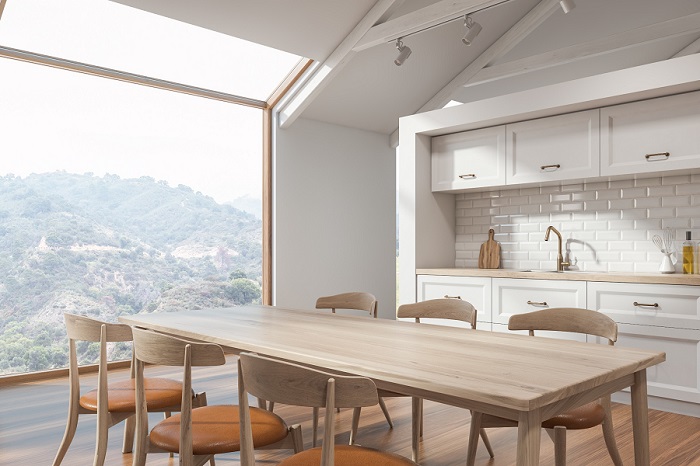
As you’ll learn, one of the defining characteristics of Scandinavian design is its celebration of the outdoors. Large windows offer generous views and invite the outside in, while plants are commonly integrated into the décor to breathe life into the space.
Interior Design Characteristics
- Color Palette: A soft, neutral color palette, featuring whites, grays, and subtle blues, echoes the Scandinavian penchant for creating a bright and airy atmosphere. These hues reflect the natural light, often in short supply during Nordic winters, to maximize the sense of space.
- Materials: Natural materials are the hallmark of Scandinavian kitchen décor. Wood, in particular, from floors to cabinets and accessories, adds warmth and organic texture. It’s often complemented by touches of stone, ceramic, and glass.
- Lighting: In the land of the midnight sun, lighting is crucial. Scandinavian kitchens typically boast a combination of natural lighting amplified by strategically placed mirrors, complemented with the warm glow of modern pendant lights and understated floor lamps.
- Furniture and Accessories: Functionality shines in the furniture choices, with sleek designs that often feature innovative storage solutions. Accessories are kept to a minimum, with a focus on practicality and craftsmanship.
Scandinavian VS Modern/Mid-Century
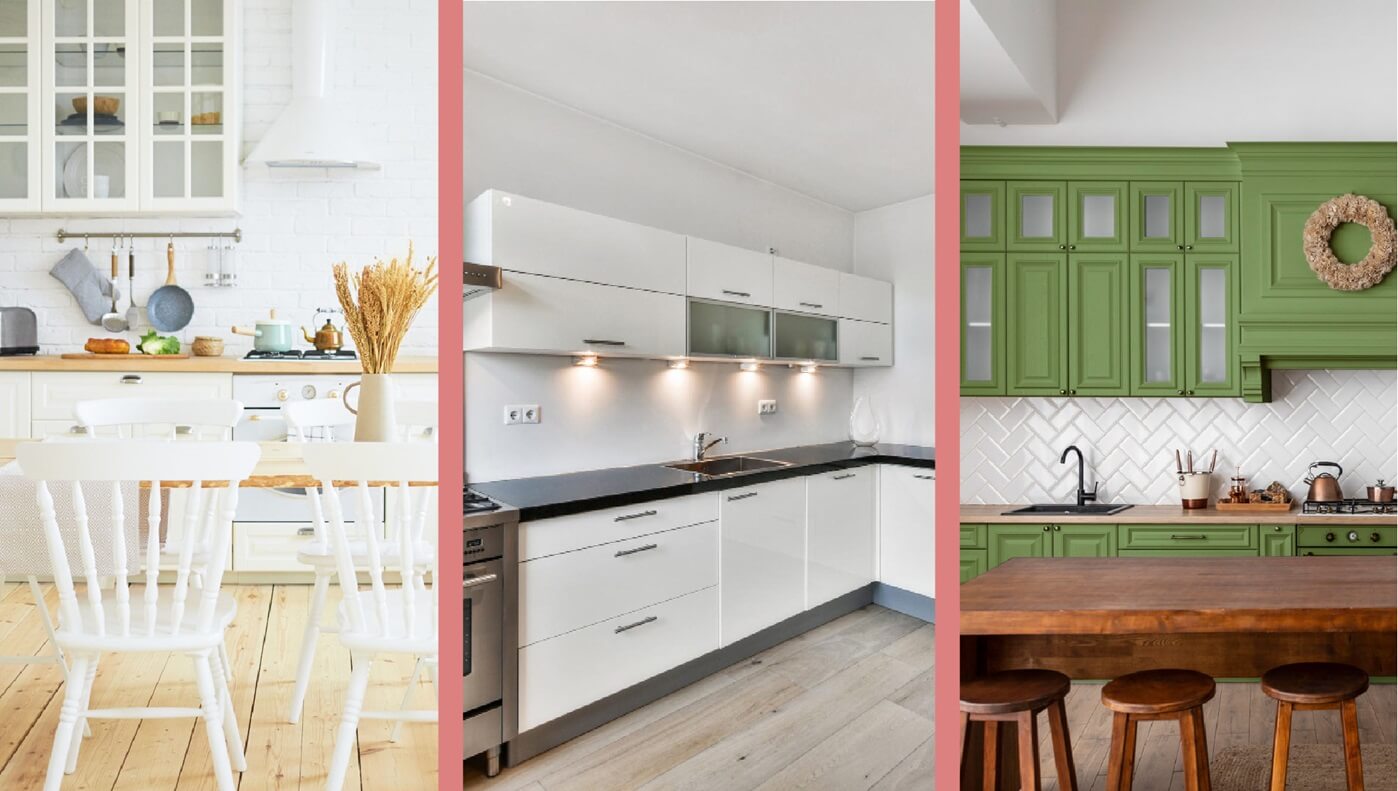
Scandinavian kitchen design is often compared to other minimalistic styles like Modern and Mid-century Modern, but there are several distinct characteristics that set it apart. While Modern design emphasizes the “form follows function” principle with a focus on materials such as steel and glass, Scandinavian design closely aligns function with nature, opting for organic materials like wood and incorporating soft hues to enhance the feeling of warmth and light.
Mid-century Modern kitchens might incorporate bold, graphic colors and more overt retro influences, whereas Scandinavian kitchens embody a much more subdued palette and strive for a harmony that echoes the serenity of Nordic landscapes. The incorporation of plants and the emphasis on maximizing natural light with large windows and reflective surfaces further distinguishes Scandinavian from its design counterparts. It’s this dedication to natural elements, simplicity, and functionality that not only differentiates Scandinavian kitchens but also contributes to their reputation for creating a peaceful, cohesive environment.
Construction
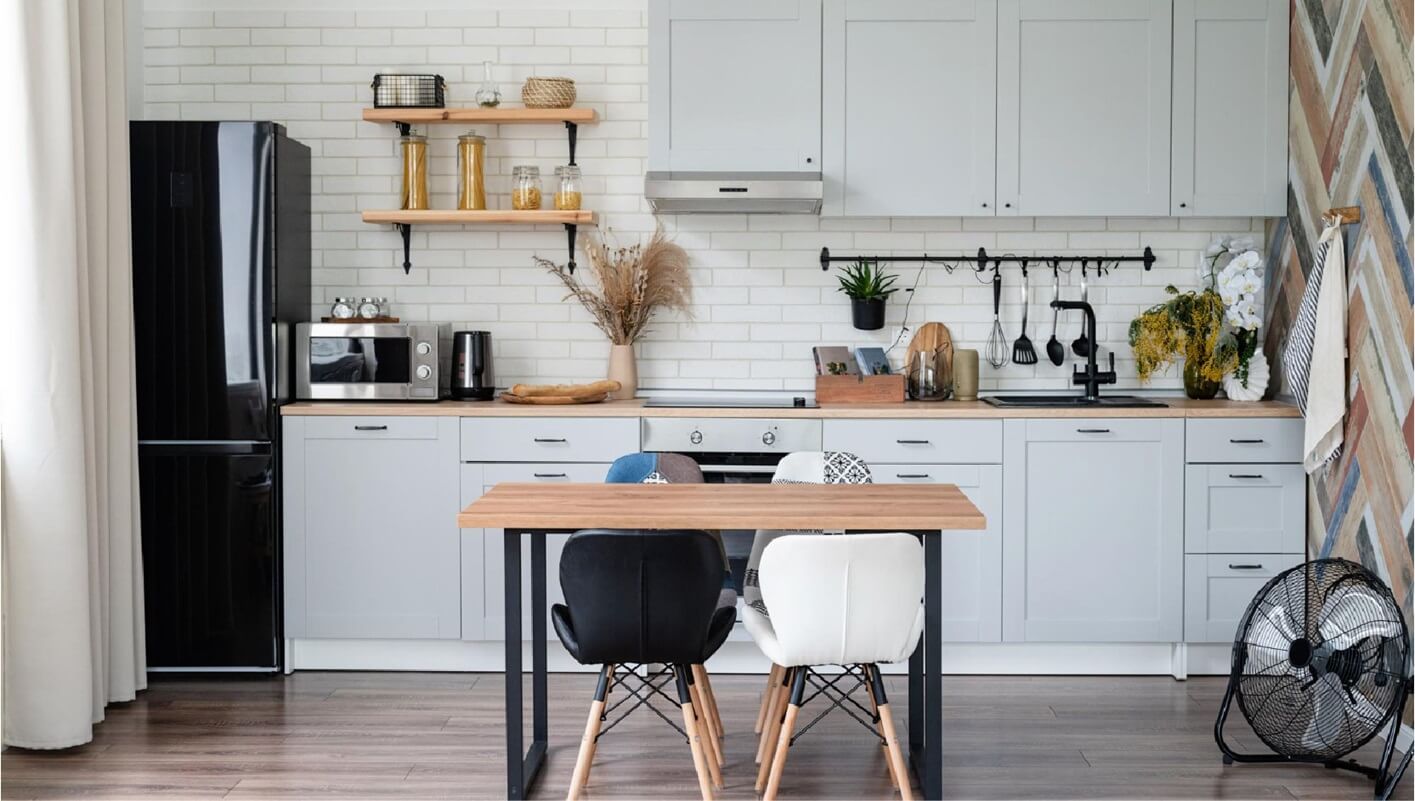
The Scandinavian kitchens are known for their efficiency; the layout is thoughtfully planned, with a clear workflow and everything within easy reach. Combine that with the design’s iconic minimalist style, it creates a space that is both aesthetically pleasing and functional.
Cabinetry
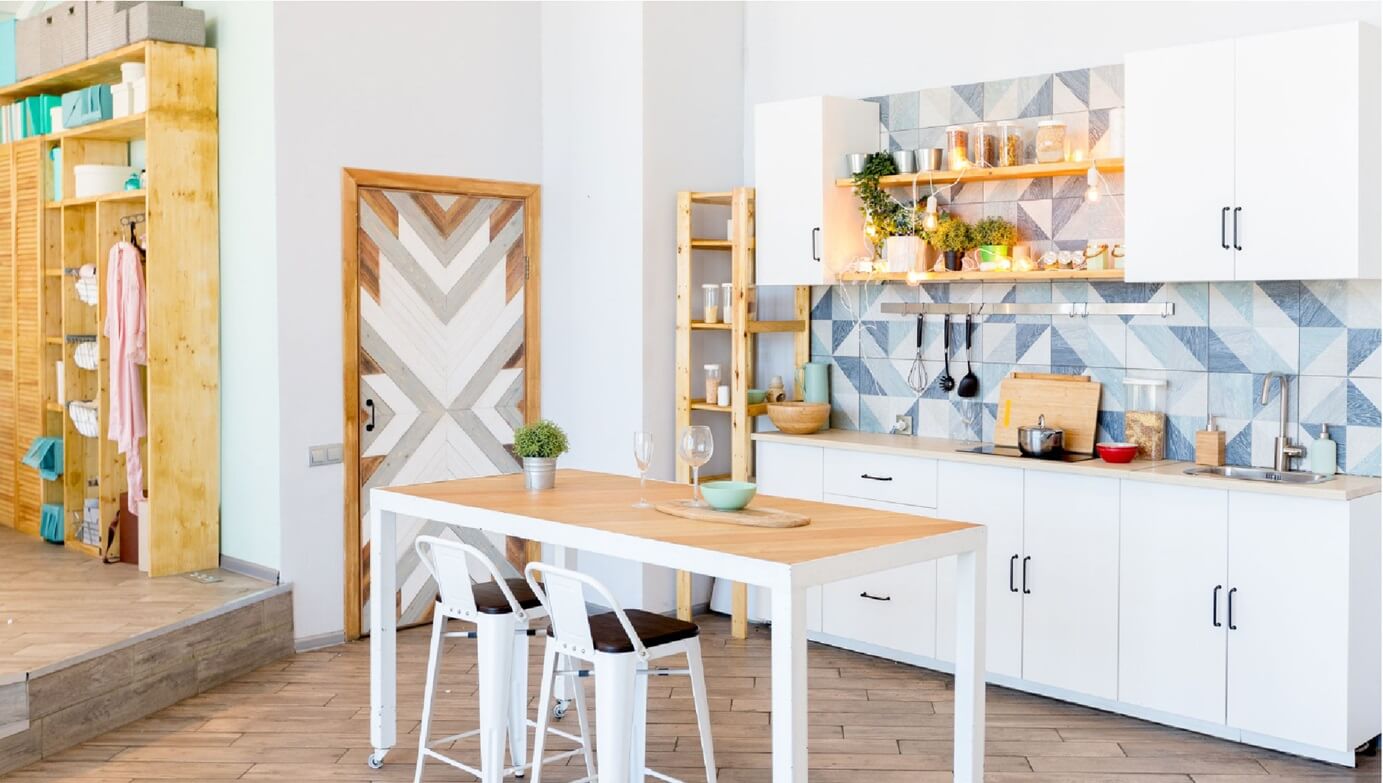
Cabinetry in a Scandinavian kitchen evokes both the principles of minimalism and the importance of functionality. The cabinets often reflect this with flat-panel doors with a handle-less design or simple, unobtrusive handles that contribute to the clean, sleek aesthetic.
Natural wood is widely used in Scandinavian cabinetry to bring warmth and texture to the space, although it is sometimes painted in white or soft greys to maintain the light and airy feel of the kitchen. Innovative organization systems are typically integrated within the cabinets, allowing for smart storage solutions that keep clutter at bay and maintain the design’s signature unencumbered look.
Flooring
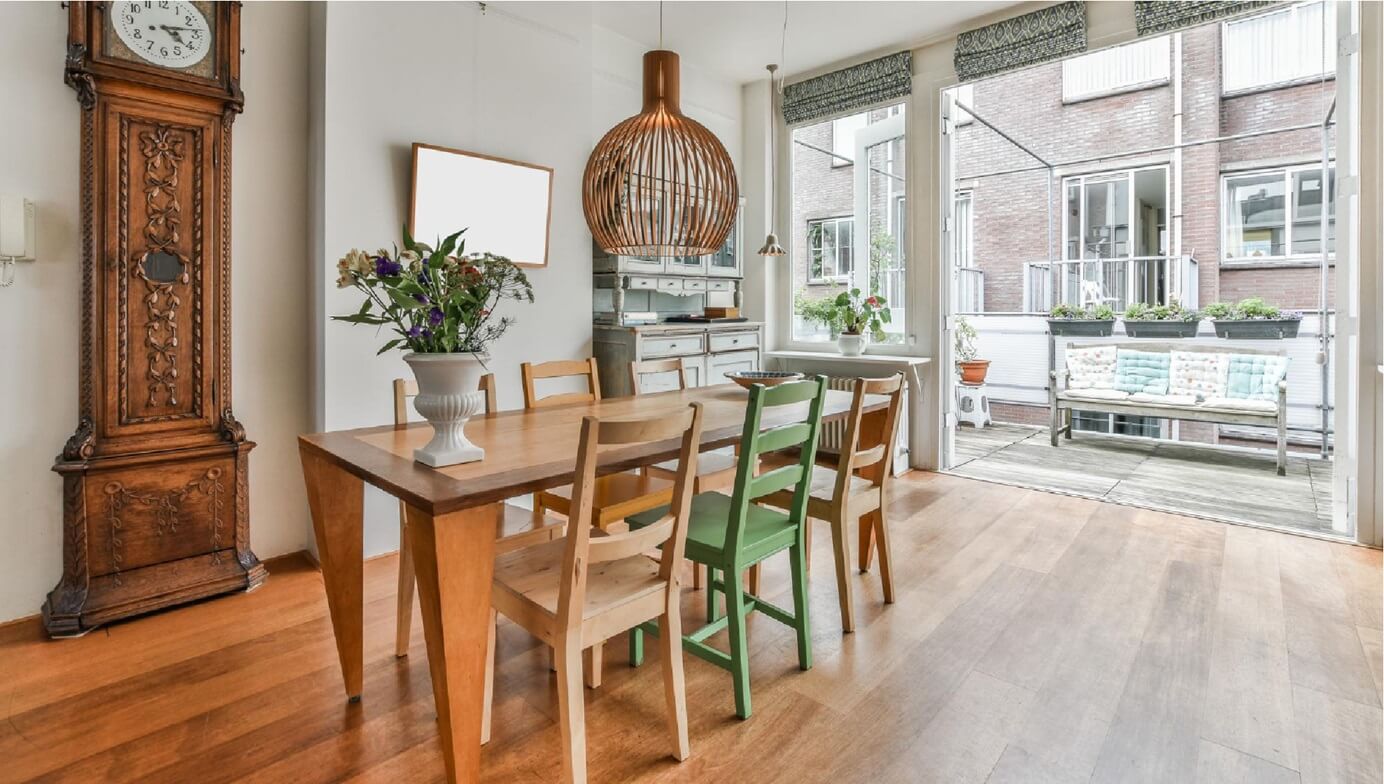
Flooring in the Scandinavian kitchen continues the theme of simplicity and warmth. Traditionally, light-colored hardwood floors are the foundation—reflecting the natural light and enhancing the space’s open, airy feeling. Wide planks are preferred to create a sense of continuity and flow, and are often treated with a matte finish that showcases the wood’s natural beauty without the shine. In today’s Scandinavian kitchen design its common to find polished concrete or large-format ceramic tiles in neutral tones also make an appearance, providing a durable and easy-to-clean surface that aligns with the practical aspects of the style. Whatever material, the flooring remains uncluttered and is sometimes adorned with textured rugs, adding comfort and a hint of coziness underfoot. For bargain Scandinavian inspired flooring check out your local IKEA or jump on their website. We’ve featured them as a top vendor for their pricing and DIY approach.
Countertops / Backsplash
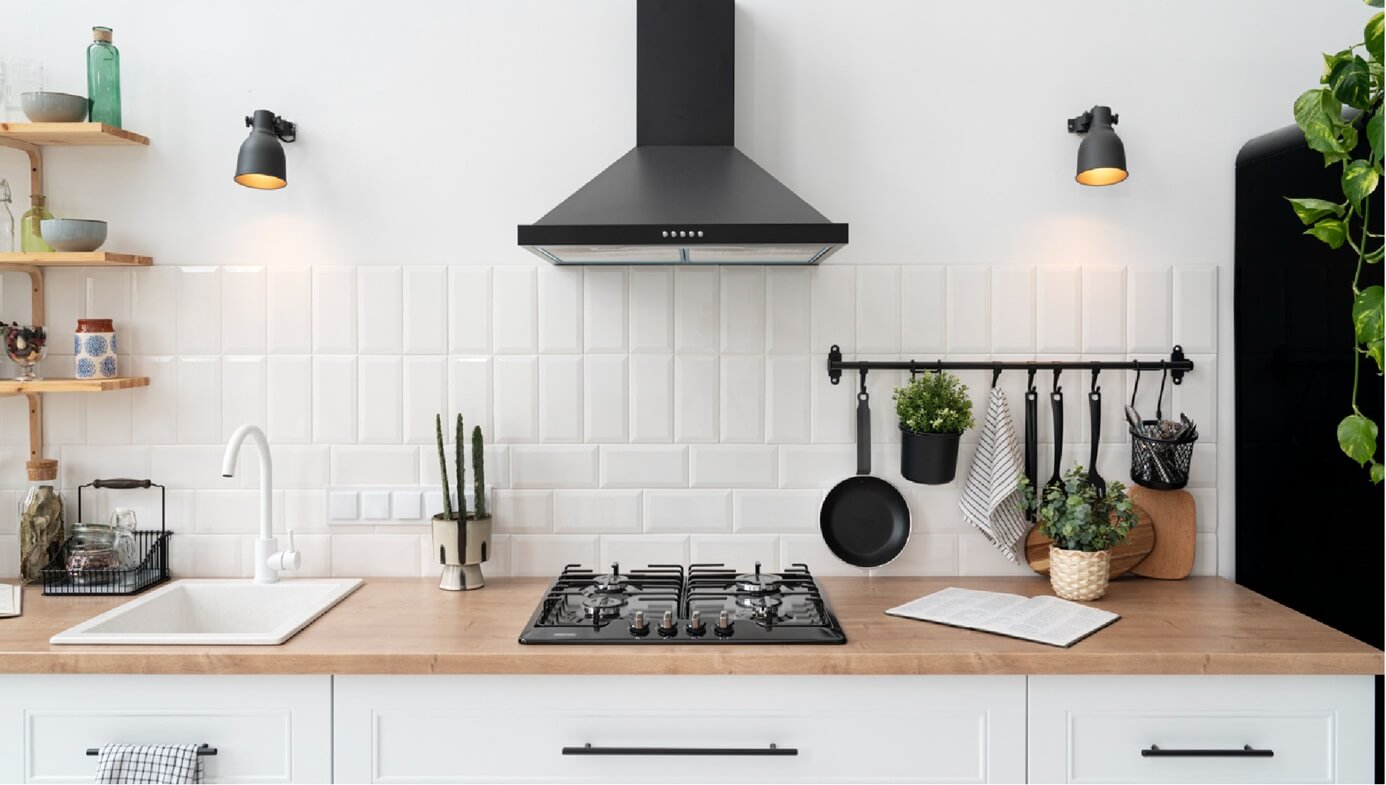
The countertops and backsplash in a Scandinavian kitchen maintain the theme of minimalism, clean lines, and functional beauty. Countertops are typically made of materials like polished stone or composite, with subtle veining or uniform colors that complement the neutral palette. Durability and ease of maintenance are key considerations, resulting in surfaces that stand the test of time while embodying understated luxury.
When it comes to the backsplash, simplicity does not preclude creativity. Ceramic tiles in rectangular or square shapes can be arranged in patterns such as herringbone or basketweave, introducing texture and subtle visual interest without overwhelming the space. Often, the backsplash is executed in the same material as the countertops to create a seamless look that amplifies the kitchen’s sense of cohesion and spaciousness. Read more on the role countertops play in your kitchen’s style here.
Both elements aim to marry function with form, a true testament to the Scandinavian harmony of practicality without sacrificing design quality.
Ceiling
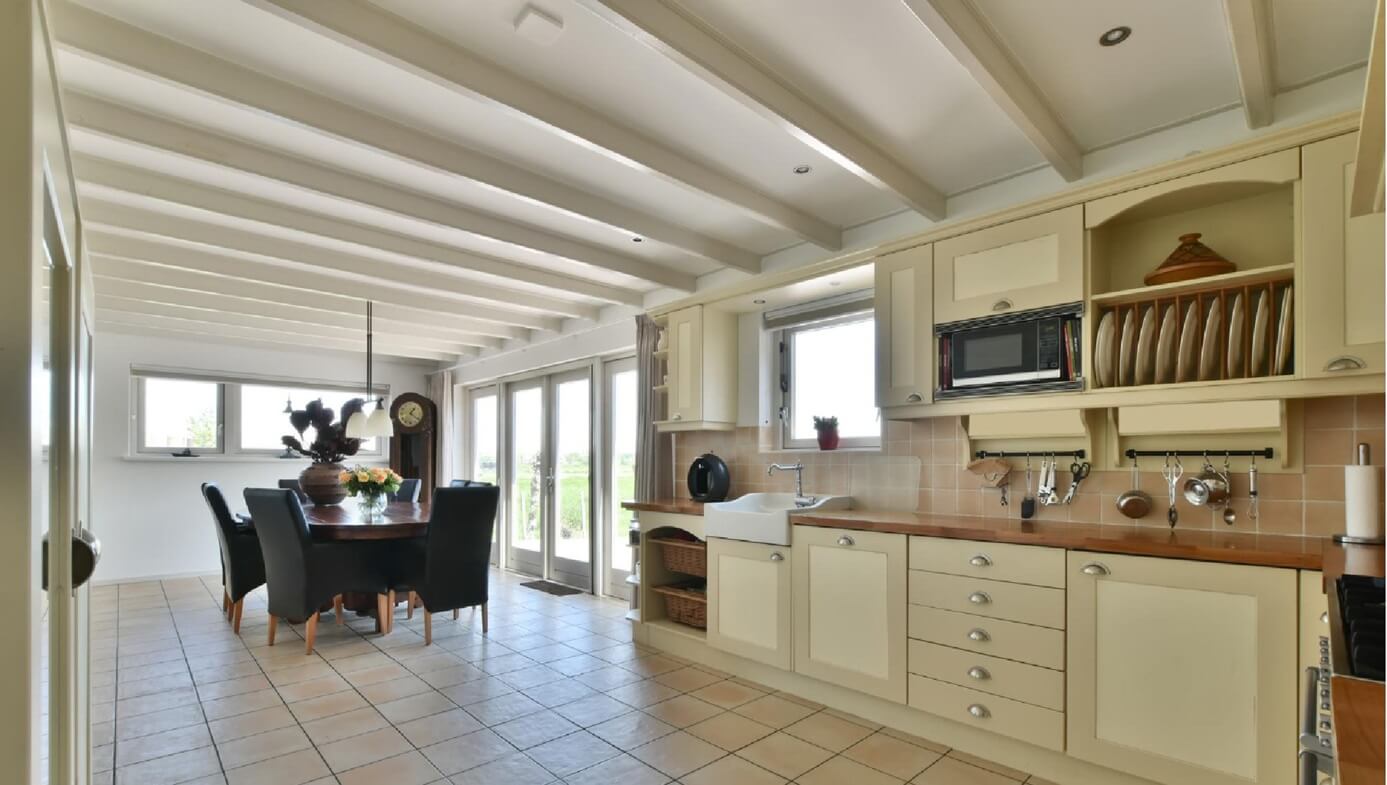
The ceiling in a Scandinavian kitchen is an extension of the design’s ethos — it embraces simplicity and aims to enhance the airy, open atmosphere. Typically finished in smooth white or soft neutral tones, the ceiling helps to reflect natural light throughout the space. Architectural details are kept minimal, with recessed lighting often used to maintain a clutter-free aesthetic. In some spaces, exposed beams may be featured, maintaining the natural wood finish to add warmth and a touch of rustic charm that contrasts with the overall minimalist approach. The goal is to create a tranquil overhead canvas that complements the rest of the interior.
Personal Touches
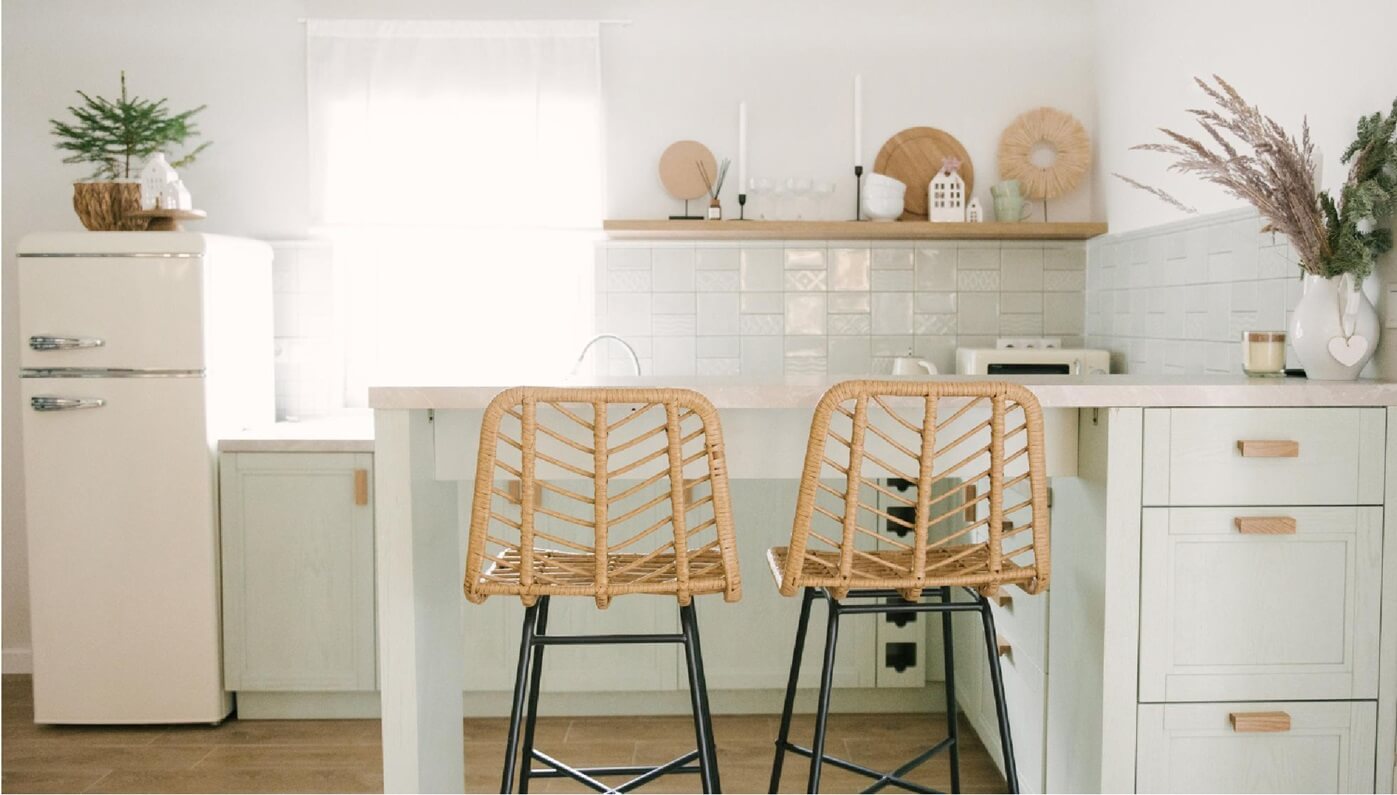
While Scandinavian design emphasizes minimalism, it also values personal touches that make a house a home. This is reflected in the concept of ‘hygge,’ a Danish word embodying comfort and contentment. Soft textiles, handmade pottery, and family heirlooms add warmth and personality to the modern Scandinavian kitchen. Aside from that, there’s endless personal touches that can be integrated to transform your current kitchen style into the space of a the Scandinavian philosophy. Here’s a few of the most common things you’ll find;
Storage
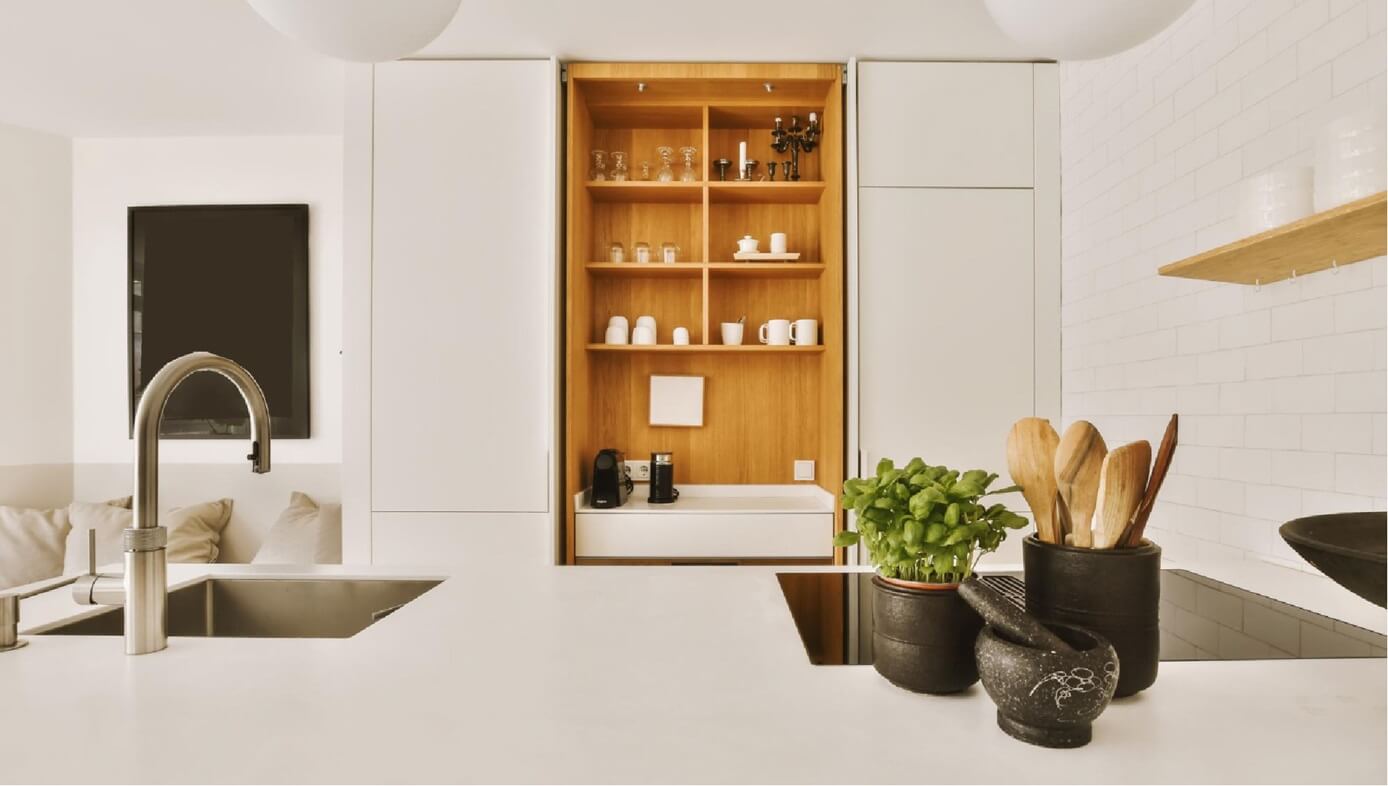
Clean lines and clutter-free surfaces are key to the Scandinavian aesthetic. Smart storage solutions are essential, from hidden cabinets to open shelving that displays items of beauty and frequent use. The design is all about reducing excess and showcasing simplicity and order.
Sustainable & Eco-Friendly
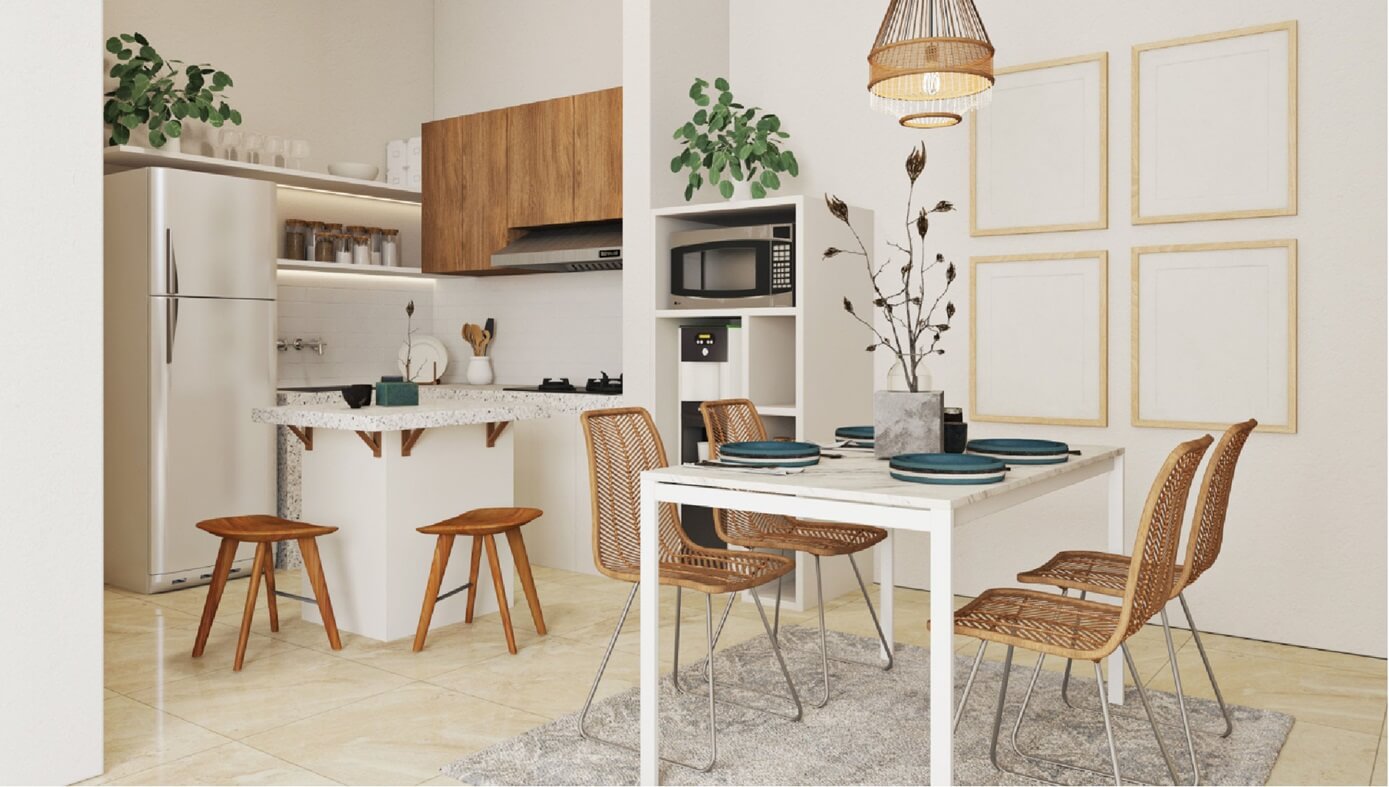
Sustainability is an intrinsic part of Scandinavian living. Eco-friendly practices are integrated into kitchen design, with a preference for locally sourced materials, energy-efficient appliances, and a reduction of waste, aligning with the deep respect for nature that is central to this aesthetic.
Lighting
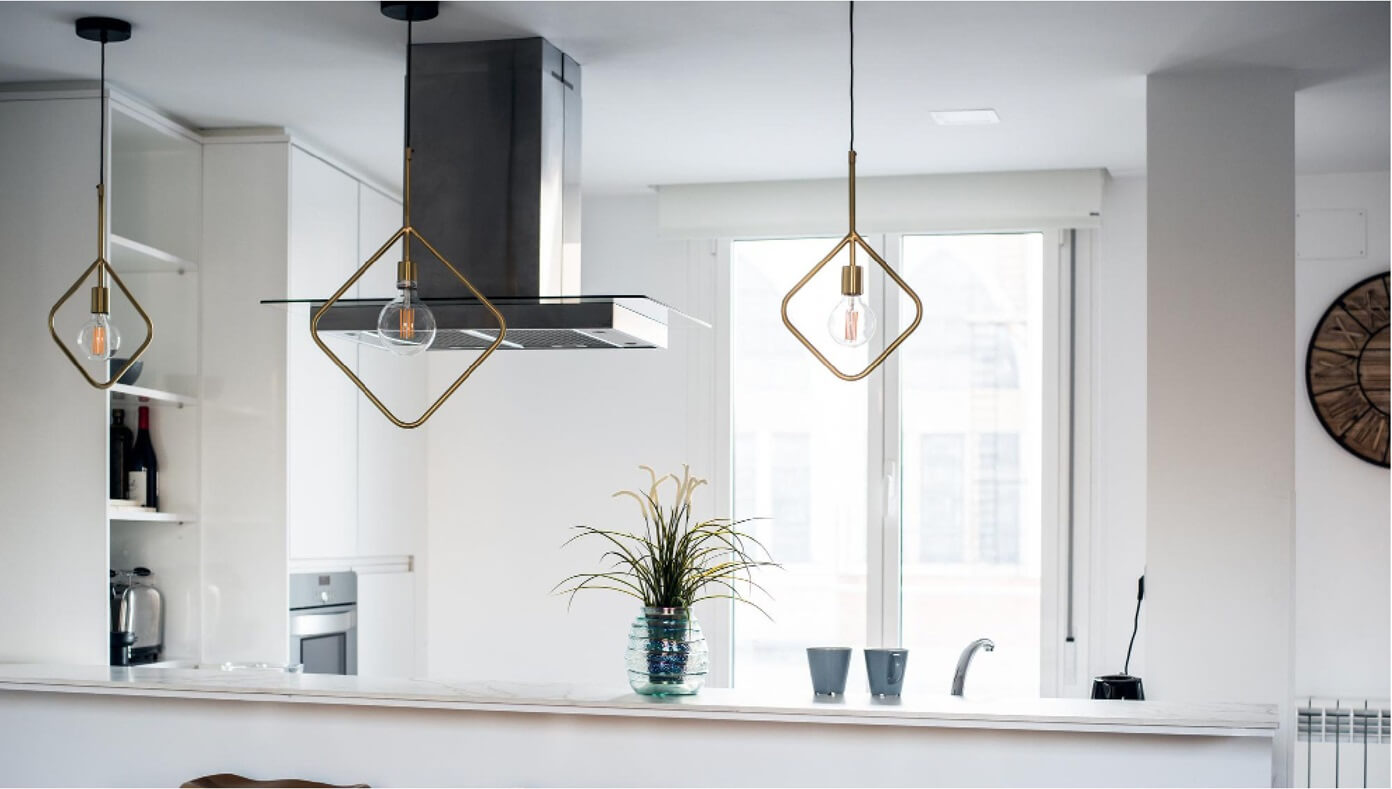
Lighting is important for any kitchen, but in a Scandinavian kitchen it’s key; not only to fend off the long winters but also to enhance the design’s clean lines and muted color palette. It’s common to see a combination of statement pendant lights over dining areas or islands and understated under-cabinet lighting that introduces a warm glow while providing functional illumination for tasks. With an emphasis on natural and eco-friendly materials, fixtures made from glass, wood, or ceramics in simple geometric shapes complement the aesthetic. Additionally, strategically placed candles or subtle integrated LED strips can provide a calming ambiance and contribute to the key concept of ‘hygge’.
Open Shelving
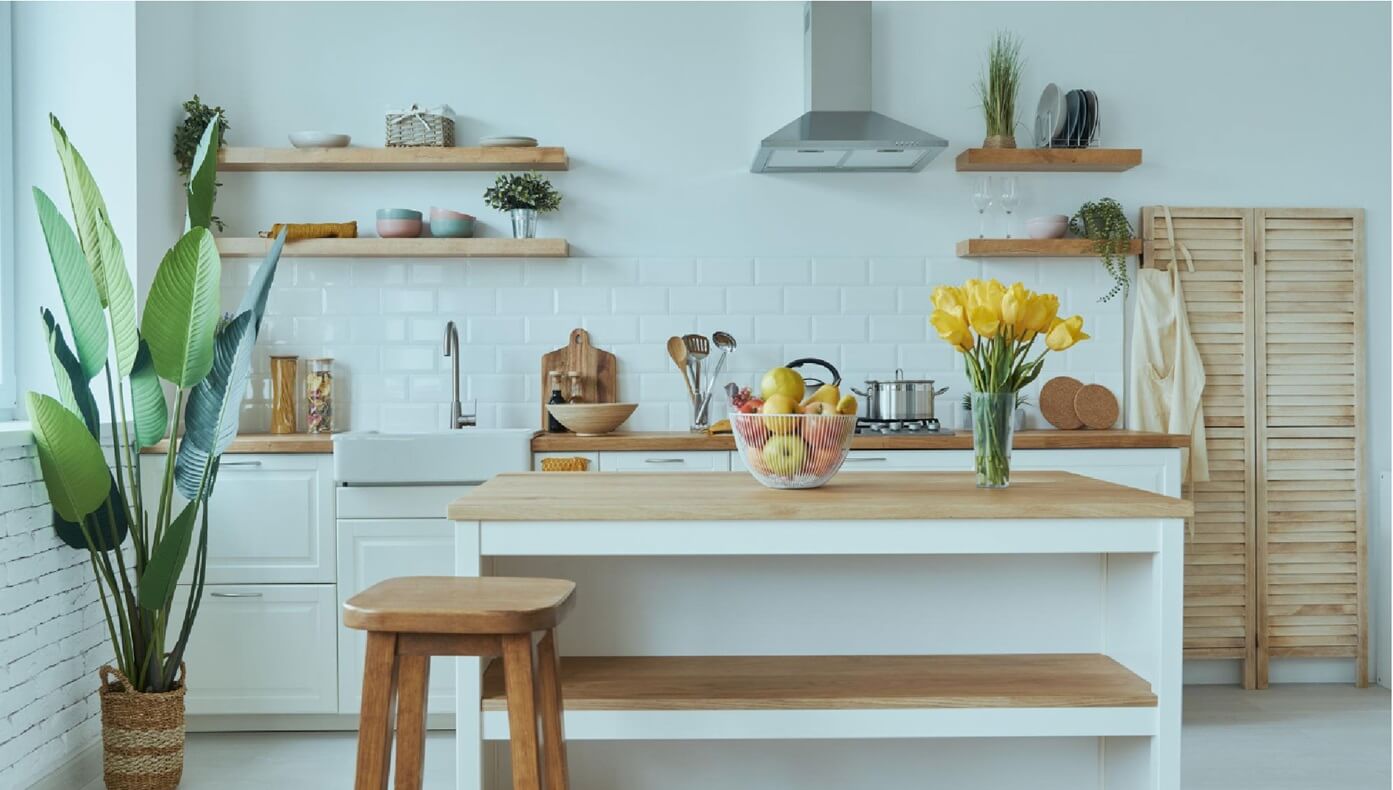
The modern Scandinavian kitchen often features open shelving to add to the sense of openness and to display carefully selected kitchenware. Shelves are typically made of natural wood or metal, reflecting the design’s preference for natural materials and clean lines. Hanging pot racks are another element that marries functionality with design, keeping essential cookware at arm’s reach while adding a focal point above kitchen islands. See here to read little more on open shelving.
Color Scheme
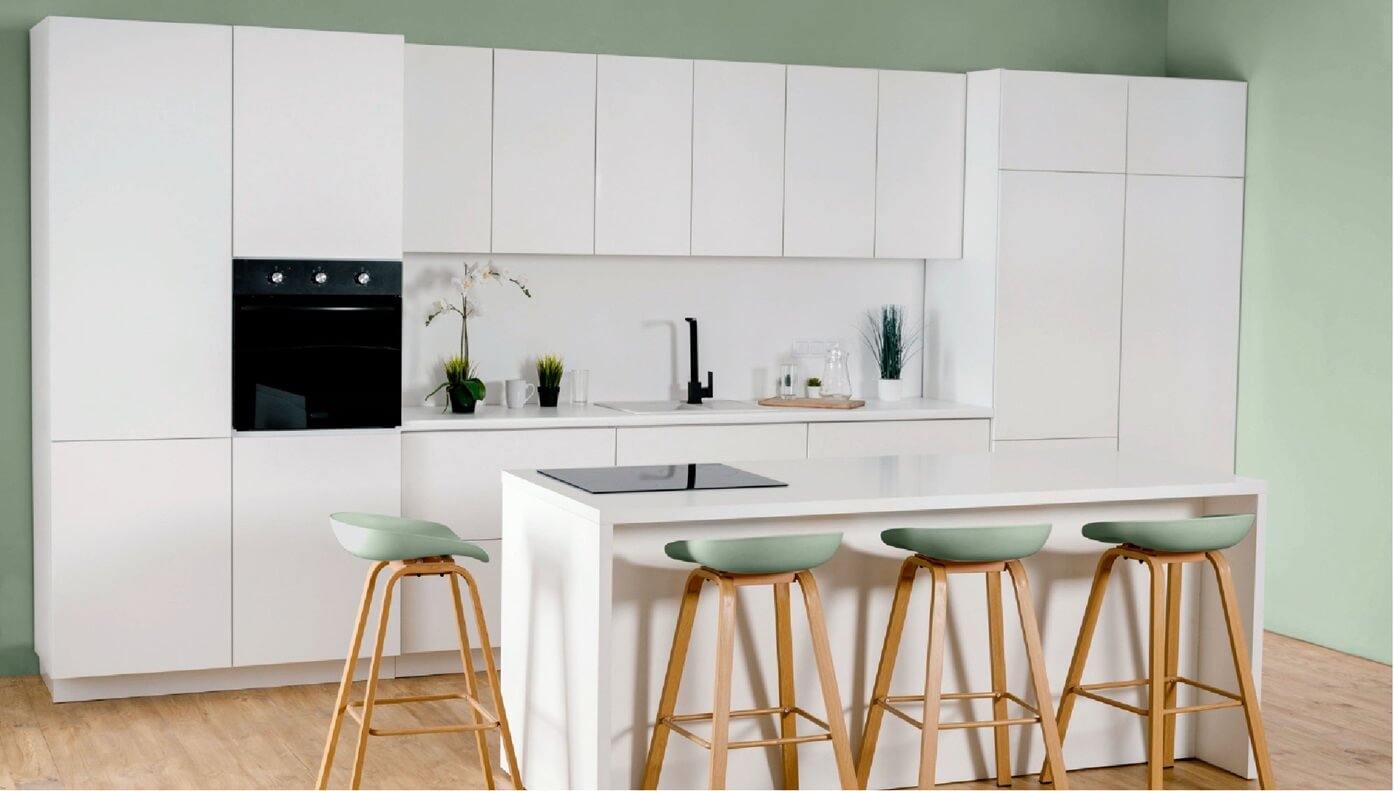
Scandinavian kitchens usually follow a monochromatic color palette, characterized by whites, blacks, and grays, to create a harmonious and calming space. Accents of earth tones or pastel colors can be injected through accessories like vases, dish towels, or seating cushions. These subtle splashes of color enliven the space without detracting from the overarching minimalist and tranquil vibe.
Integrated Appliances
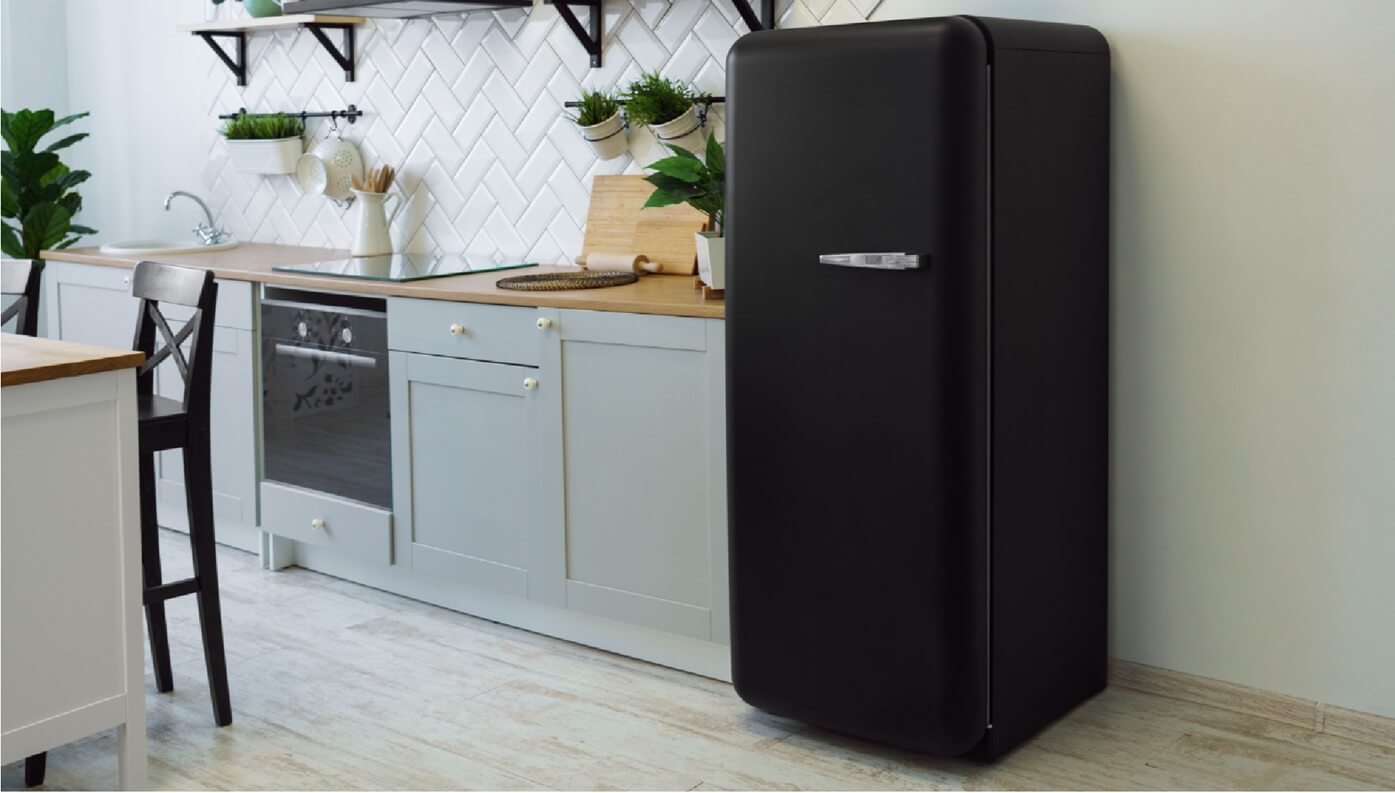
To maintain the sleek facade and clean lines, appliances are commonly integrated into the cabinetry with matching front panels. Concealed range hoods can also be found in a Scandinavian kitchen. These design choices prevent visual interruptions and retain the kitchen’s streamlined aesthetic.
Functional Furniture
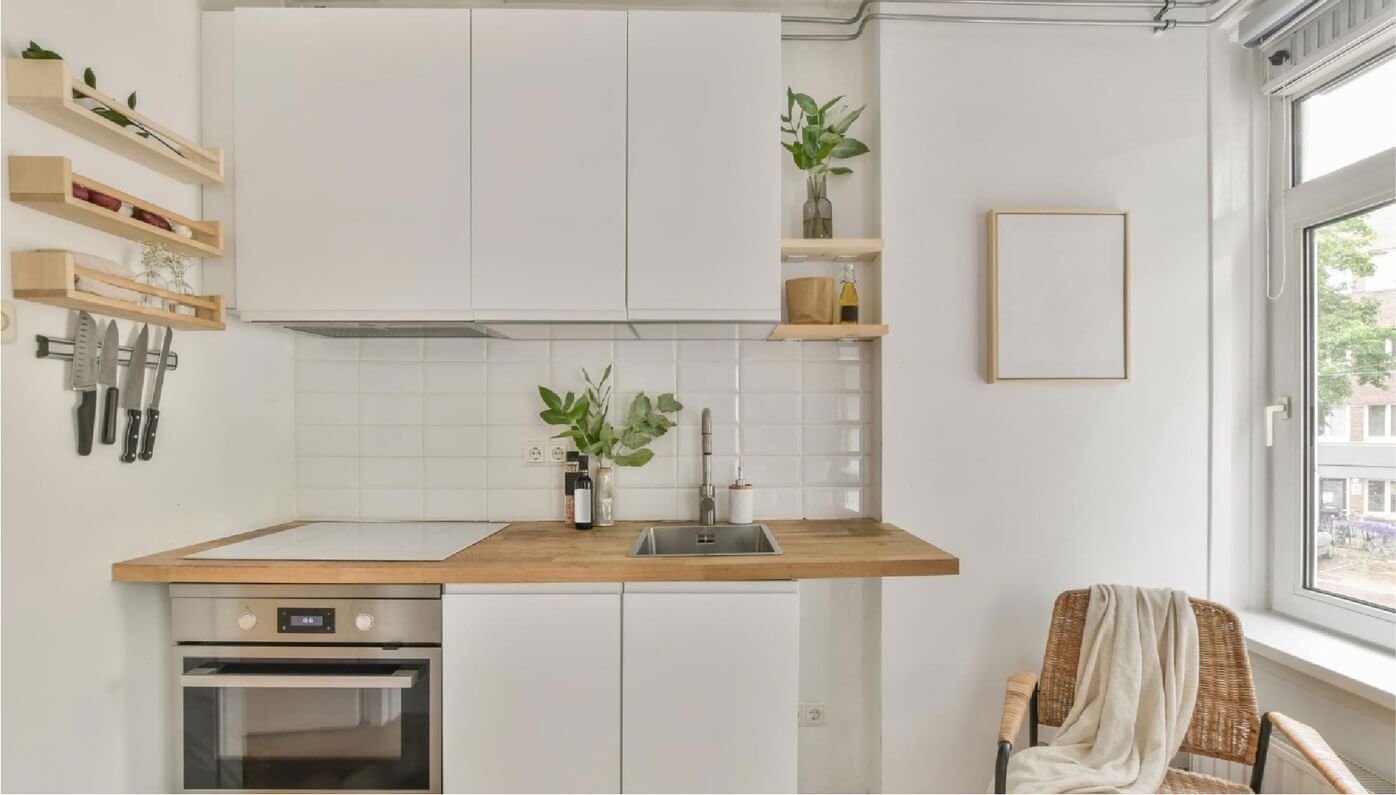
Furniture in the Scandinavian kitchen is often designed to be multi-functional. For instance, kitchen islands can serve as both a prep station and dining area, complete with built-in storage. The use of stackable or foldable chairs can help maintain an uncluttered look while providing additional seating when needed.
A Little Tradition
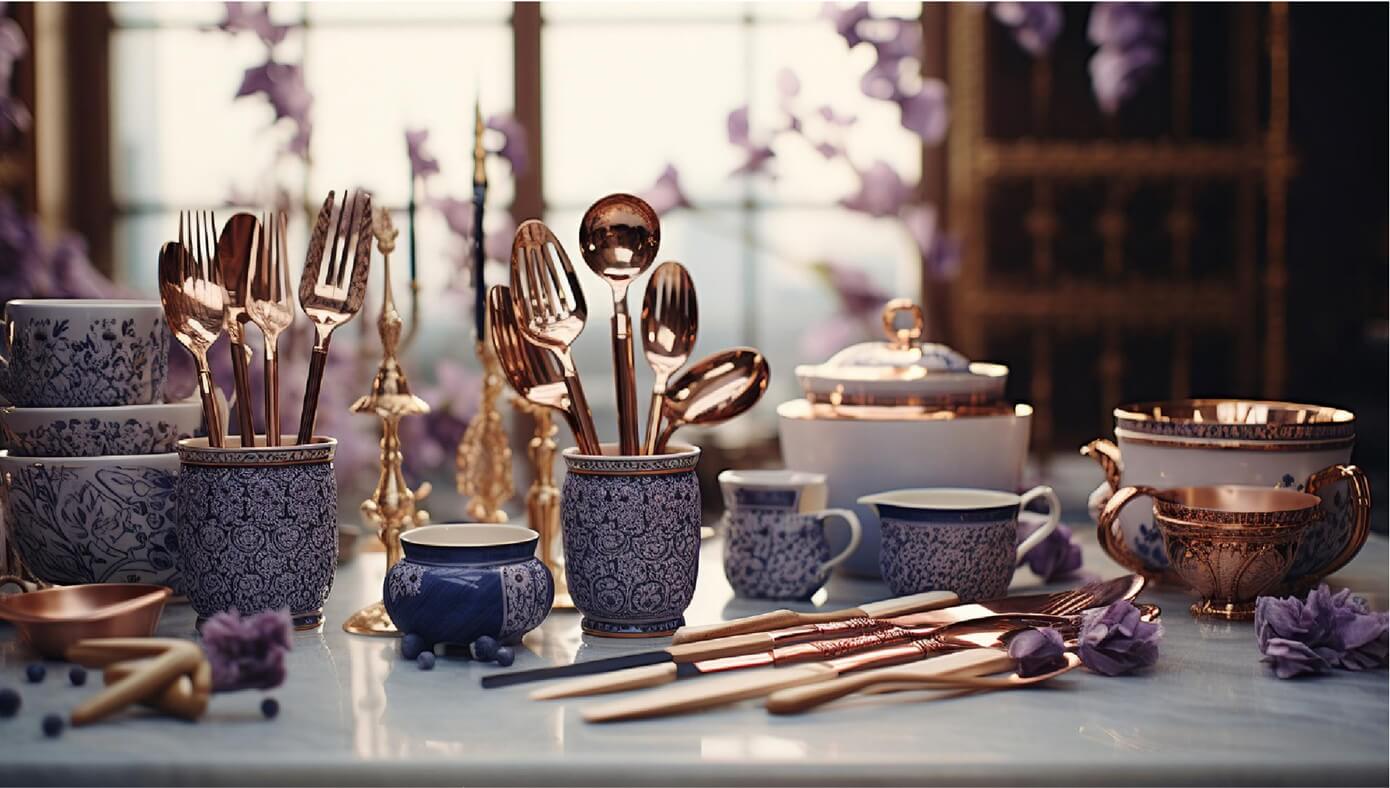
While contemporary Scandinavian kitchens are minimalist and modern, they sometimes incorporate traditional elements, like carved wooden spoons, heirloom silverware, or classic stoneware. These items add sentiment and authenticity to the space, bridging the gap between old and new.
These design elements are cohesive with the Scandinavian philosophy that beauty is enhanced through functionality, and that good design is to be lived in — a perfect blend of form meets function, where every detail has its purpose.
FAQs
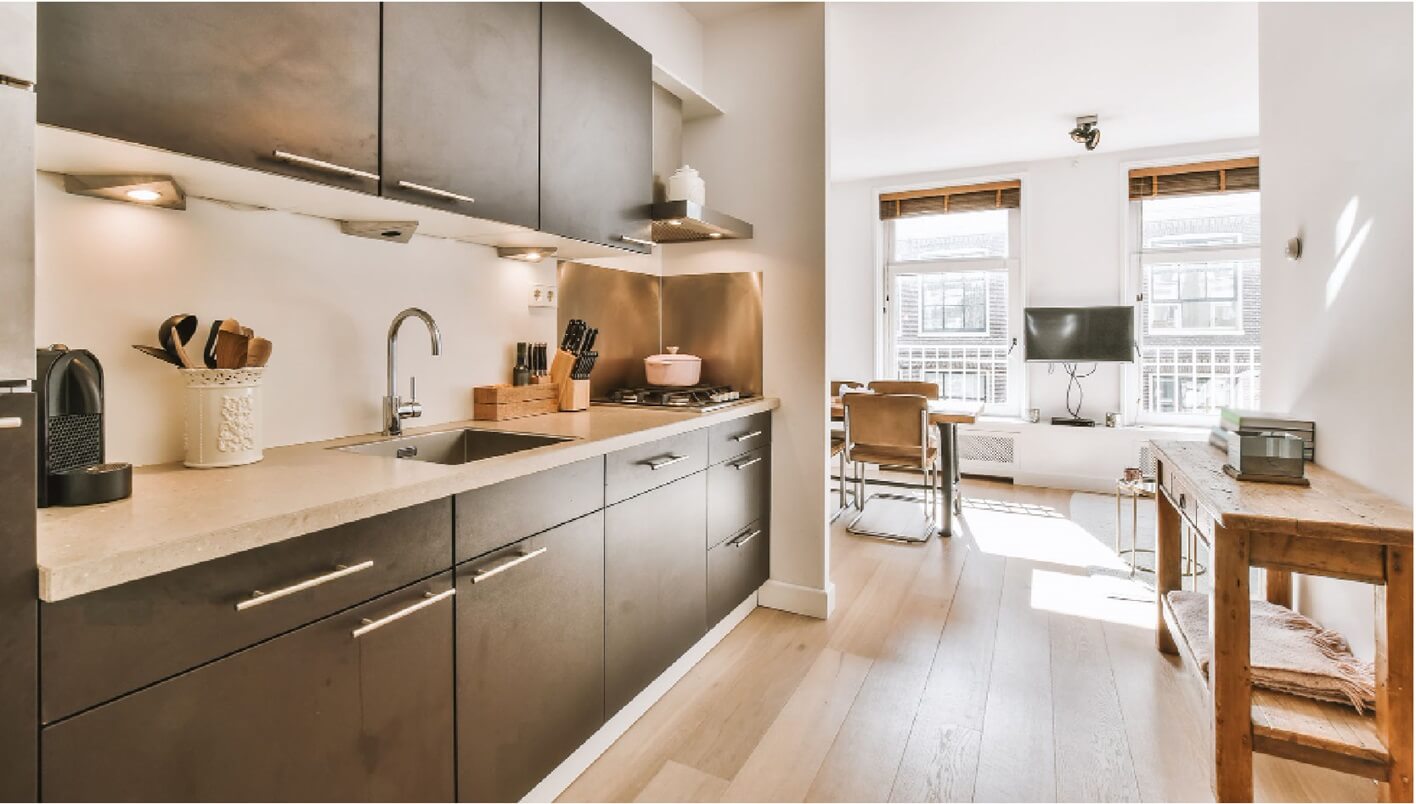
What colors are typical in a Scandinavian kitchen design?
Last updated on July 22nd, 2024 at 07:22 am
Expect to see a lot of white and other light neutrals, punctuated occasionally with soft greens and blues, inspired by the Nordic landscape.
What is the role of texture in a Scandinavian kitchen?
Last updated on July 22nd, 2024 at 07:22 am
Texture is used to add warmth and interest in a Scandinavian kitchen, often through natural materials like wood, wool, and linen.
How do you maintain the minimalist look without sacrificing functionality?
Last updated on July 22nd, 2024 at 07:22 am
Smart storage and well-considered design allow Scandinavian kitchens to remain functional yet uncluttered, keeping essential items accessible but out of sight.
More questions? Have feedback related to this article and Scandinavian kitchens? Comment below or feel free to reach out to us directly.
Ready to transform your kitchen into a serene Scandinavian retreat?
Contact us today and let our team of design experts help you integrate the simplicity, functionality, and beauty of Nordic minimalism into the heart of your home. Let’s create a space that’s not just a place to cook, but a haven you’ll love living in.



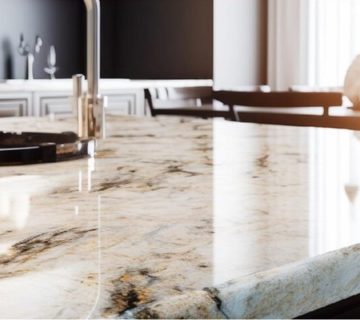

No comment